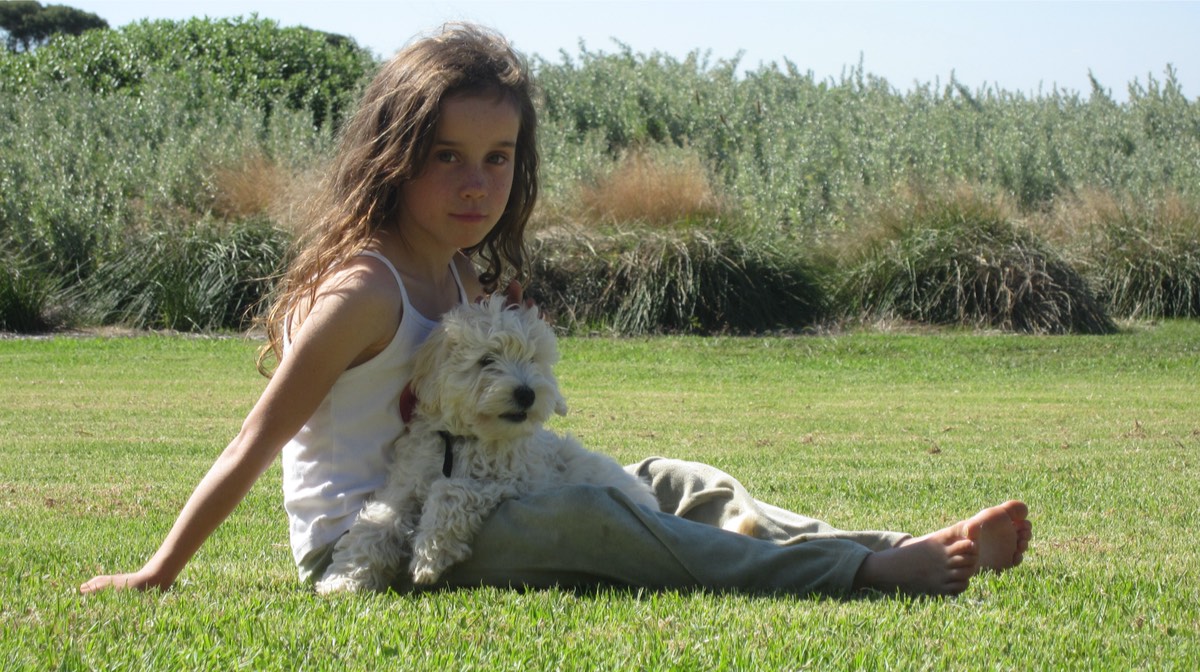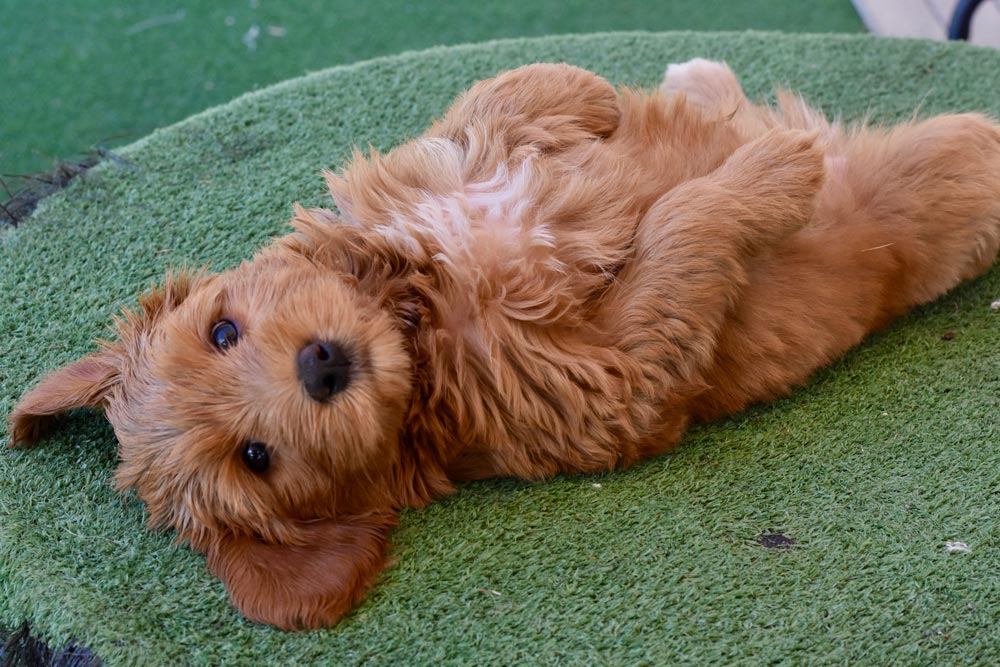Here are 10 tips to help maximise your training opportunities with your new Amalie Labradoodle puppy in the first 8 weeks at home. This age offers the most amazing learning window as it’s when your pup’s brain is developing rapidly and has the capacity to soak up information like a super sponge. Make sure he learns the good stuff!!
Our top 10 tips for 5 minute training sessions
-
Set yourself up for success – do some research and set the ground rules
- a resource we like: The Perfect Puppy in 7 days by Sophia Yin (e-book available online)
- check the Puppy Culture playlist for structured training and socialisation from 8-16 weeks
- understand that puppies have fear periods and your job at this time is to build confidence by supporting him – not forcing him. Some pups need to watch from the sidelines, first.
-
Engage a trainer – at home, in class, online
- Baxter and Bella online training (use the code AMALIE for 25% discount)
- have a trainer come to you where they will be able to assess the entire family dynamic and provide instant feedback and guidance – great for families with kids
- book your class early so you can get in at a time that suits you and is best for your puppy’s learning
- your breeder and trainer are the key people you should look to if you need to troubleshoot behaviours

Olympia and Luca just spending quiet time together, relaxing on the grass.
-
Keep sessions short and sweet
- 5 minutes is about the extent of puppy attention span
- 5 minutes is the time it will take you to feed your pup his (or her) meal – training at meal time is a perfect match giving 3 short sessions a day
- let your pup’s mind rest for a good hour after training by asking very little of him … playing on his own outside, having something to chew or rest time is perfect for after a training session. The time allows your pup’s brain to integrate what he has just learned so always end on a positive note.
-
Keep calm and carry on – a reminder for you and your puppy
- teach your puppy that calm behaviour is his default behaviour…
- you will always be able to find the “fun button” but you want you pup to learn “chilled” first up
- when you engage in busy play ensure you spend adequate time bringing the energy back down to chilled. Never rev your pup and leave your pup in a heightened state
- rough, fast, busy and excited do not equate to fun. Teach confidence and relaxed approach to life for a better balanced puppy – it is how your Amalie puppy has started his life with us.
-
Don’t rush your puppy – build skills gradually and sequentially
- your Amalie Labradoodle puppy will be capable of guiding you and letting you know when he is ready for more
- repetition and variety are two key things to develop behaviour while sustaining his interest and enthusiasm
- and remember its OK to take a step backwards – here’s a great training video that teaches sequential training for a ‘sit and stay.”
-
Rewards – not all treats are equal!
- try dinner (especially if its raw), poached chicken or Prime100 log in small cubes
- kibble is not sufficient to entice your dog to go further / do better
- use small bites – Ziwi Peak dry food is fine for adults but too big for puppies
- time your rewards to promptly mark the desired behaviour – for this reason a clicker can be useful as it is quick and easy to mark behaviours you want to reward in a timely way and follow with a treat reinforcer.

Find a quieter time for beach socialisation for young pup not yet fully vaccinated
-
Safe socialisation before vaccinations are complete – don’t waste this precious time
- practice walking off leash in the house – hallways are good for this, reward with hand feeding
- scent games in the back yard … sprinkle a trail of Ziwi Peak dry food to find or use a ‘Kong Wobbler’
- trips in the car – start small, reward and make it fun
- head out to pet friendly places – carry your pup (no paws on the ground)
- visit the playground, sit on a bench or a picnic blanket and watch kids being noisy
- say hello to passing people and things from your front garden
- use Amalie’s socialisation checklist for more ideas (in our Puppy Care Notebook for Amalie puppy owners)
-
Walking is not necessarily about a destination – first master the behaviour
- first you learn how to walk nicely off leash (around the home, in the back yard)
- then you learn on leash walking with a nice loose leash that hangs in a “J”, puppy by your side
- then you learn to walk in increasingly distracting environments maintaining all that good behaviour you learned intially
- once you have all this down pat, THEN you can think about walking to the cafe or the park
- first master the behavior – then you can head out to a destination
-
Be consistent in your messages
- give consistent messages – verbal, hand signals and body language cues
- puppies read a lot of body language so consistency in your movements is important
- did you know that stepping off on the left and stepping off on the right foot both give different messages? With puppy walking on your left side we use stepping off on the left foot to mean “let’s go” and on the right, “wait there.”
-
Everyone has to be in the right frame of mind for training
- reinforce the right stuff – be mindful to only reinforce behaviours you are thrilled about having for life
- train when you and puppy have time, energy, focus and patience …. if any of these are missing, skip it and come back later
- don’t feel like training? that’s OK. Sit down on the floor with your puppy and teach him to chill with you – it’s a much underestimated life lesson for him and has health benefits for you both.

